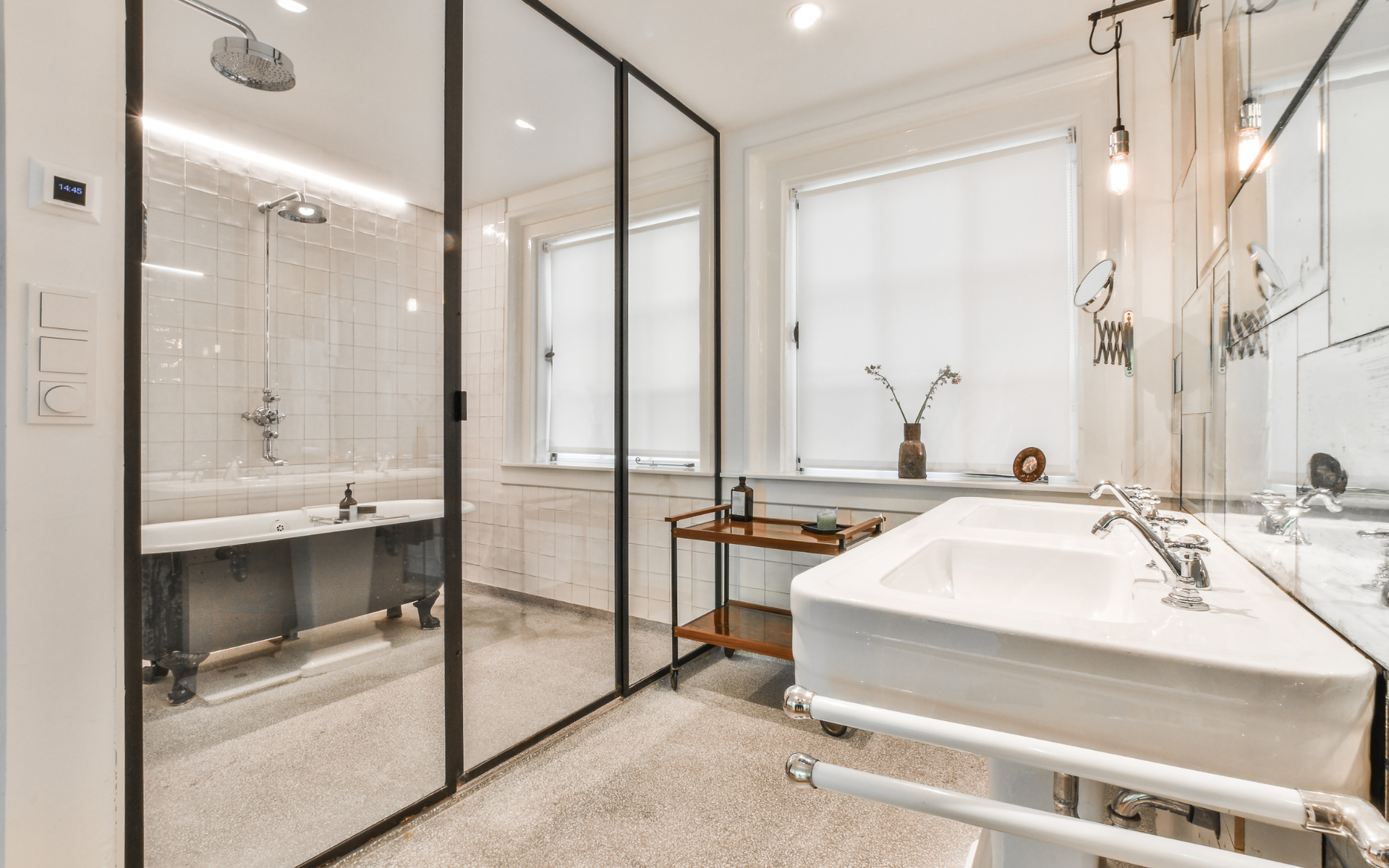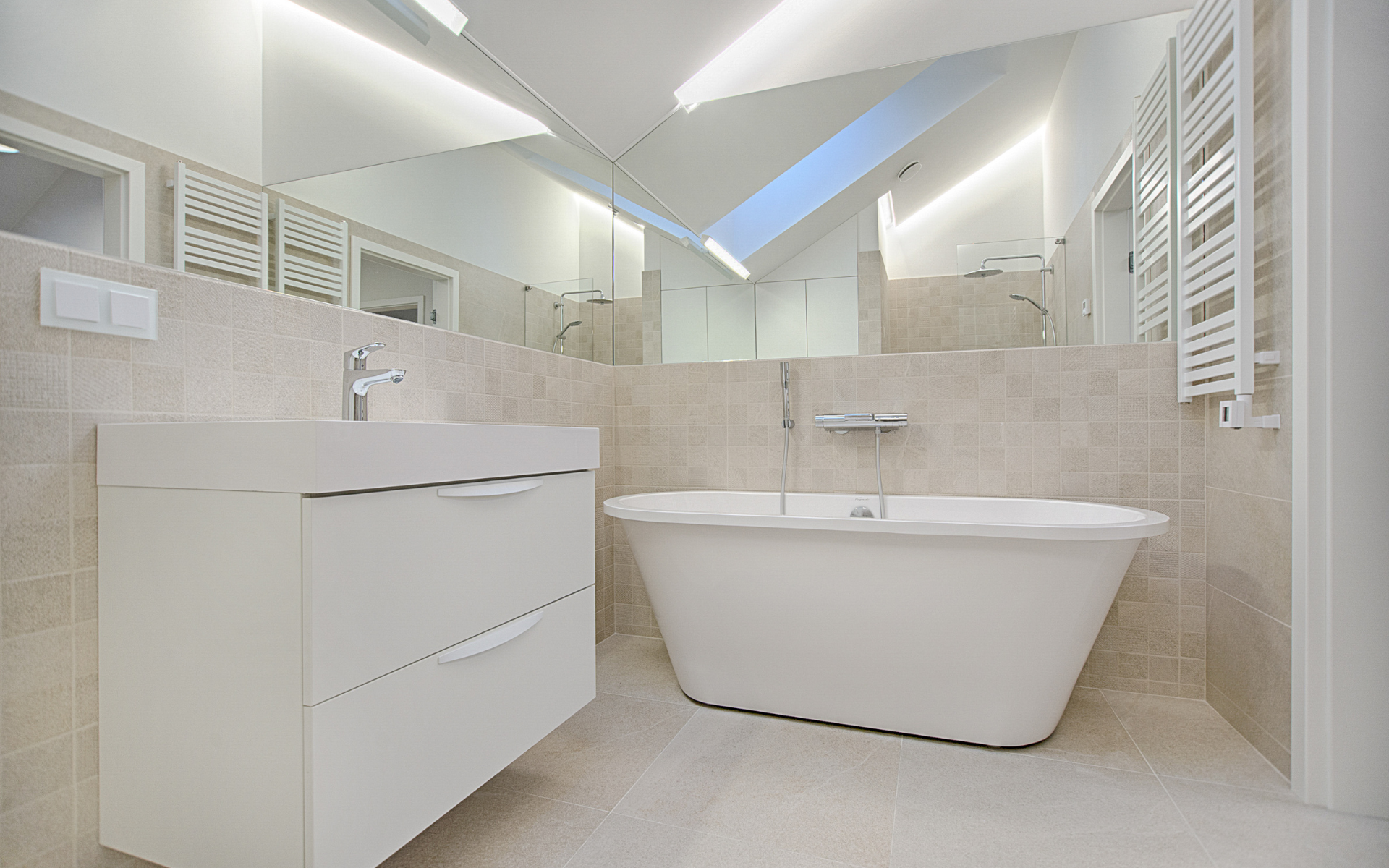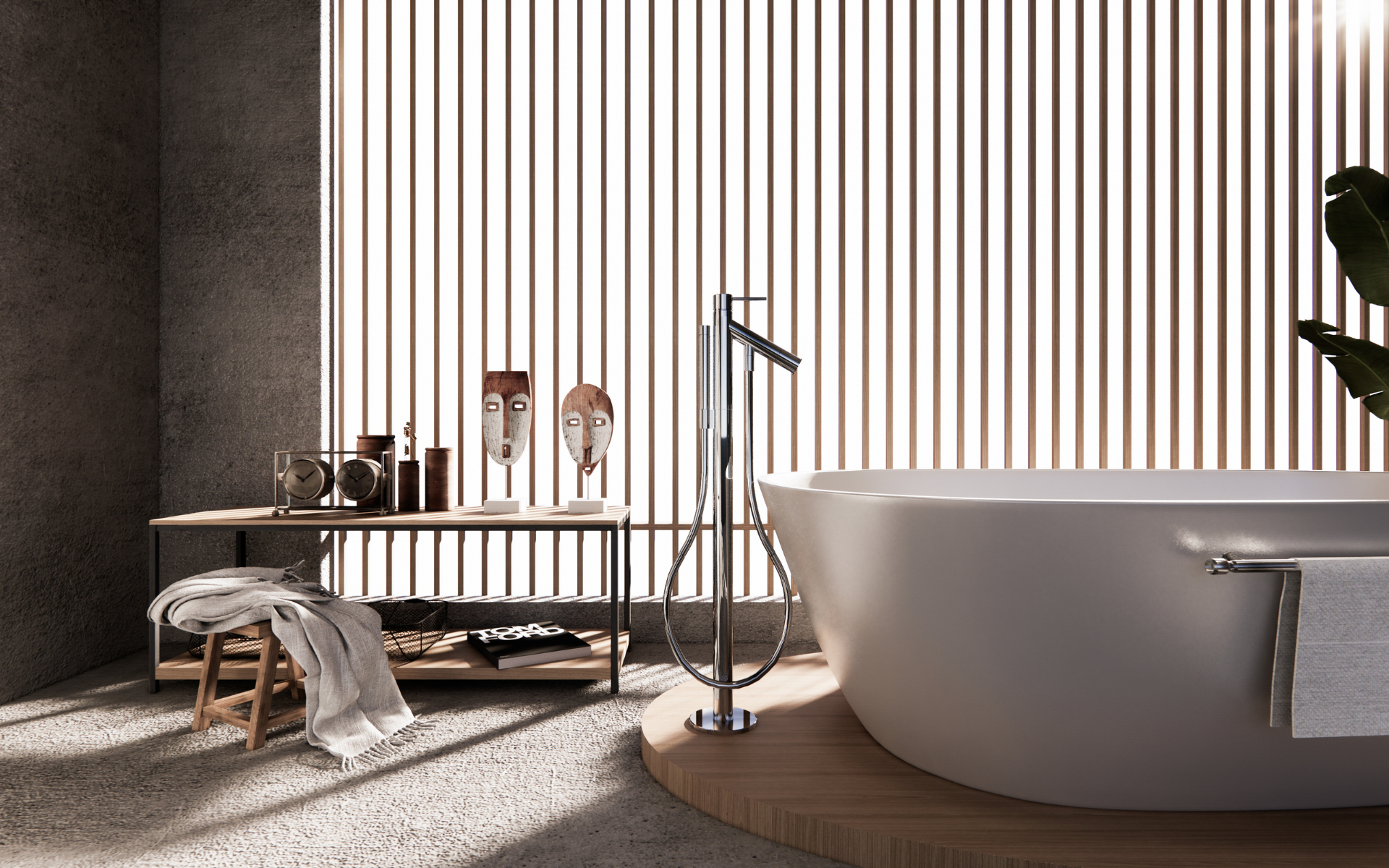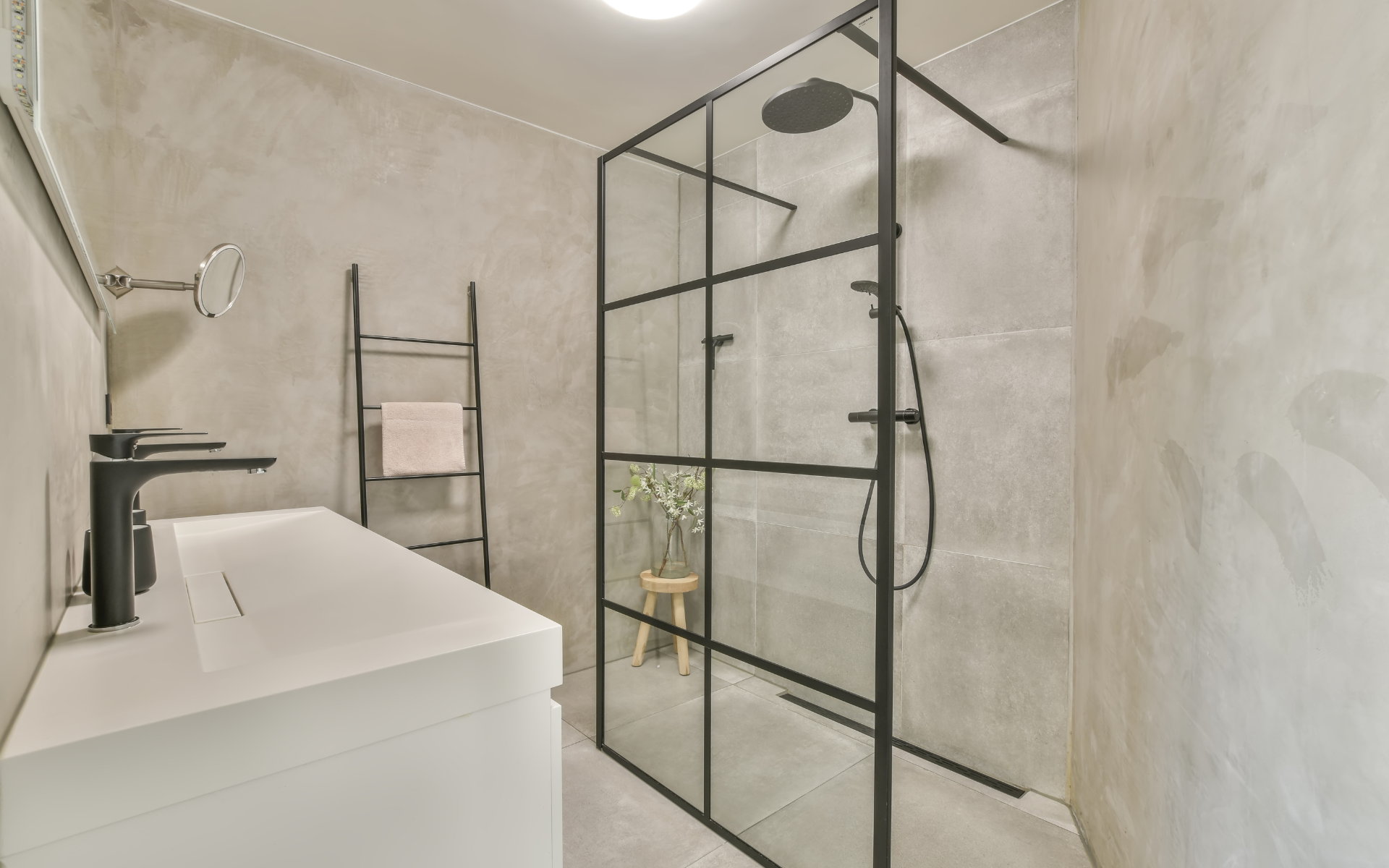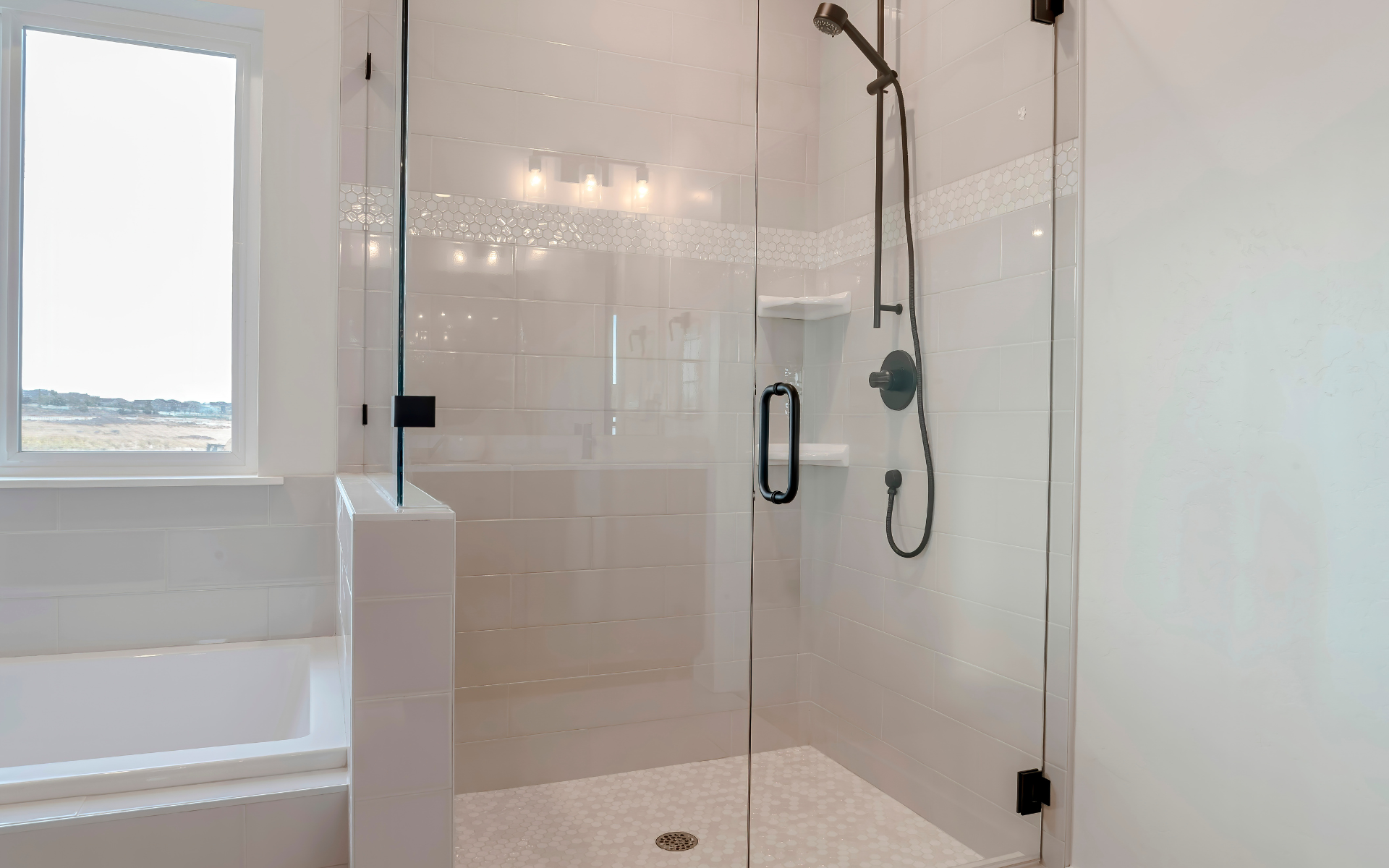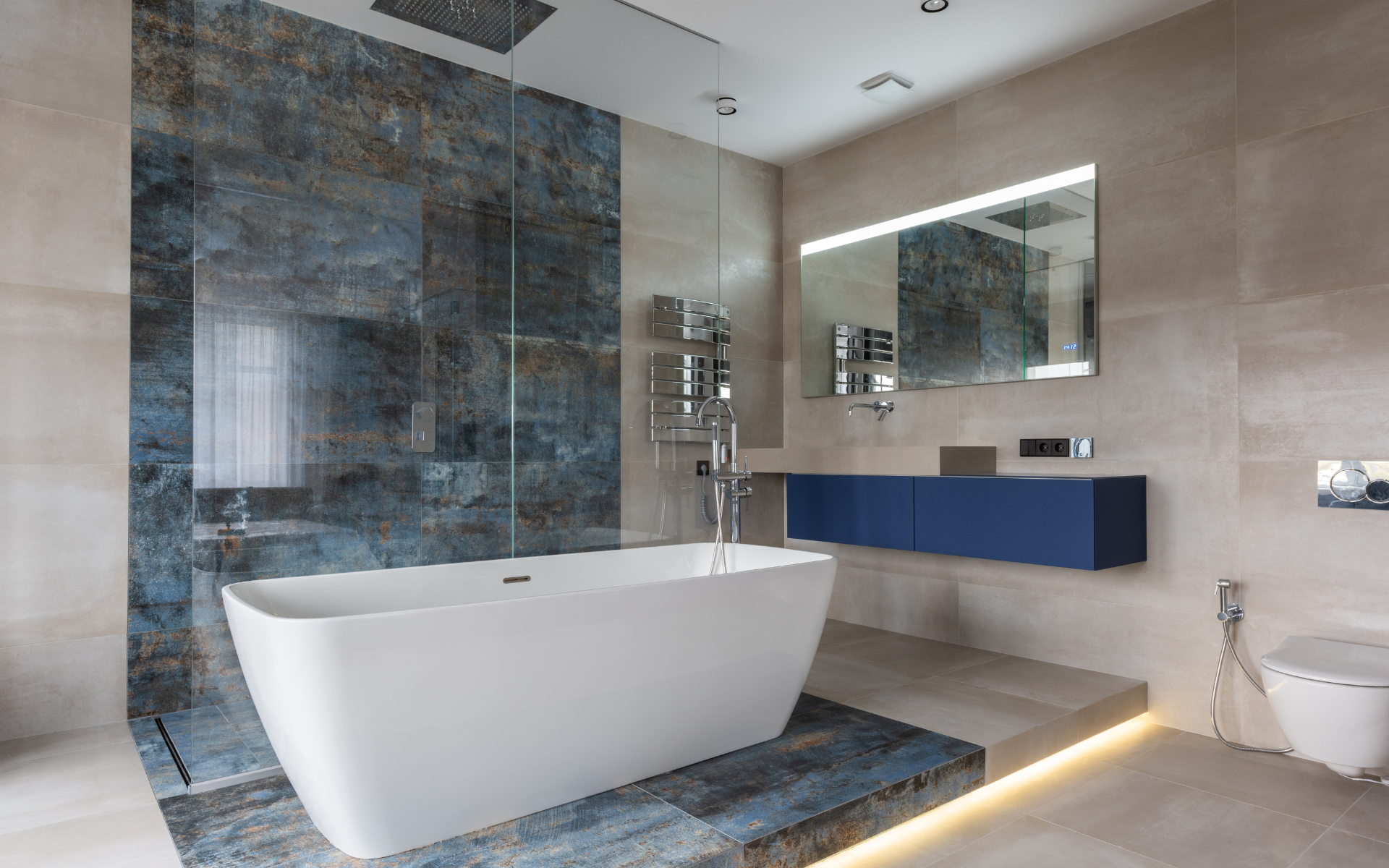
Transforming a kitchen and bath is not a simple project, especially if it’s about transforming a shower into a bathtub can be a daunting but rewarding home improvement project. With careful planning and preparation, what was once a simple shower can become an elegant and inviting soaking tub adding comfort, resale value, and style to your bathroom. Before taking on a shower-to-tub conversion, it’s important to understand the processes involved from start to finish including tub types, layout changes, plumbing, and waterproofing considerations.
Table of Contents
Converting from a shower to a bathtub requires strategic steps from removing shower components like floors, walls, and plumbing to installing and sealing a new tub. Tub options range from free-standing tubs to alcove tubs to corner tubs in materials from acrylic to cast iron to stone resin. With the right measurements and placement, your old shower area can be transformed into a relaxing oasis. Be sure to factor in access needs, budgets, and intended tub use when planning your shower-to-tub project. This guide covers all the details needed for a successful conversion.
The Benefits of Shower-to-Tub Conversions
Swapping a basic shower for a luxurious soaking tub offers numerous advantages beyond just enhanced style. Here are some of the top benefits you can enjoy:
More Relaxing, Spa-Like Bathroom Retreat
A new tub with surrounding tile, stylish faucets, and high-end shower doors or curtains completely transforms the ambiance of your bathroom. The space becomes a relaxing, spa-like retreat for soaking stresses away. Carefully selected lighting, décor details, and luxurious linens further enhance the atmosphere.
Added Functionality & Value
Tubs provide more versatility than basic showers. You can still enjoy a standing shower while gaining the ability to soak in a warm bath. Added functionality increases a home’s value for resale as both showers and tubs are desirable.
Water & Energy Savings
Replacing an outdated showerhead can significantly reduce your water and energy bills. Newer tubs and showers offer flow-restricted fixtures and settings to conserve water. You can also reduce energy costs with on-demand hot water heating.
Better Accessibility & Safety
Walk-in tubs provide a low threshold for easier access. Installation services can include grab bars and non-slip tub flooring for improved safety, especially for children, seniors, or those with mobility issues.
Types of Tubs to Consider
Two main options exist for shower-to-tub conversions:
1. Standard Bathtubs
The most common and affordable choice is a standard alcove or platform bathtub in materials like acrylic or enameled steel. Choose from rectangular, oval, or corner tubs. Consider adding luxury features like bubble massage jets or an inline heater.
2. Walk-in Tubs
For accessibility, safety, and easy entry, walk-in tubs offer a door allowing you to step directly inside. They come in both outward and inward swing door options. These tubs provide non-slip floors, support bars, powered ADA-compliant seats, therapeutic massage jets, and more.
Ultimately the type of tub you select depends on your needs, personal preferences, and budget. Work with professional bathroom remodeling experts to select the best option to match your lifestyle and goals.
Preparing for the Installation
Converting a shower to a tub has moderate renovation implications. Proper planning and preparation ensure the project goes smoothly and efficiently while minimizing disruption. Here are key steps to complete beforehand:
Consult the Experts
Work with professional bathroom remodelers in the planning stages to review your goals, options, and bathroom remodeling budget. Experts can provide recommendations to match your lifestyle needs and ensure building codes and permits are handled properly.
Demolition & Structural Considerations
The weight load requirements differ substantially between showers and tubs, especially with cast iron or stone materials. Your existing floor joists, drain locations, plumbing, ventilation, waterproofing, etc ensure adequate support and proper drainage.
Order the Tub Early
Check lead times and order your chosen tub well in advance to avoid project delays. Custom or specialty tubs often take 4 to 6 weeks for delivery.
Purchase All Fixtures & Materials
Order the shower doors, faucets, handles, flooring, tiles, lighting, and all other fixtures ahead of time. Having materials on hand prevents scrambling and waits during installation.
Advanced planning streamlines the entire shower-to-tub conversion process for a smooth, frustration-free bathroom upgrade.
Removal of Existing Shower
Once prep work is complete, it’s time to remove your existing shower to make way for the new tub. Proper demolition protects surfaces staying in place for bathroom reuse.
Shut Off Water Supply Lines
Turn off water feeding to shower valves/fixtures to prevent leaks as components are removed.
Remove Shower Drain
Unscrew the drain top plate and pipe body from beneath the floor. Plug holes to prevent debris from falling through.
Take Out Shower Base (Pan)
Carefully break up the base mortar bed. Protect the floor from damage. Remove remaining chunks and debris.
Extract Surround Walls/Enclosure
Remove finish surround panels or tiles from surrounding walls. Avoid damaging walls for tub installation.
Remove Plumbing Fixtures
Unscrew, detach, and remove the existing showerhead, handles, valves, pipes, and diverter tub spout if present—cap supply lines.
Handle removed components containing asbestos or other hazardous materials per federal and local regulations.
Now the space is prepped and blank for your new tub installation.
Installation of New Tub & Surround
Installing the fresh tub and providing waterproof walls/surfaces involves careful attention and precision. DIYers may want to enlist professional help to ensure proper drainage slopes and leak-free performance.
Position & Level the New Tub
Place the tub in the exact desired location and use shims to perfectly level. Mark plumbing locations needing cutouts in skirt lip.
Install Drain & Waste Lines
Attach drain piping with proper glue and unions/fittings. Confirm a suitable slope angle for good water flow (typically 1/4″ per foot). Leak check.
Make Structural Modifications
accounting for weight differences between tubs and showers, strengthening the subfloor, installing new blocking, and solidifying all framing.
Wire & Plumb for Specialty Features
If adding an air bath, heated, or electronic tub, now is the best time to wire and plumb these extra functions while walls remain open.
Waterproof Surrounding Walls
Apply waterproof backer board above lip height per manufacturer instructions. RedGard or equivalent membrane seals corner seams and plumbing penetrations.
Install Surround Tile, Wall Panels, Etc
Finish tub walls with your choice of acrylic surround, tile, rock wall panels, or other decorative treatments. Follow all adhesive settings and grouting procedural guidelines.
With the basic tub now securely installed, we can move on to the exciting finishing touches!
Adding Shower Doors & Hardware
No tub would be complete without the beautifully designed shower additions that accentuate your new spa retreat. Here’s how to provide those finishing touches:
Choose Tub Filler Faucets
Select stylish faucets to match your tub hardware finishes. Mount to code-compliant positions. Include supply stops and ensure anti-scald valves integrate properly.
Add Diverter Tub Spouts
Diverter tub spouts with attached showerheads simplify switching between bathing and showering functions via a simple lever handle. Newer models have matching finishes to align with your tub filler hardware.
Install Custom Shower Doors
Semi-frameless glass doors make small spaces appear larger while adding elegance. Choose between hinge or sliding opening styles. Properly seal all edges to prevent leaks. Add coordinating door handles and towel bars.
Include Built-In Storage & Shelving
Take advantage of all possible space with recessed or wall-mounted storage niches. Glass-front medicine cabinets also free up the counter area around sinks. Add floating shelving for keeping bath essentials nearby but out of sight.
With all new accouterments installed, you now have a fully functional and fabulous new tub shower combination for your home.
According to HomeAdvisor, key steps when switching showers to tubs include plumbing modifications, waterproofing, framing reinforcements, surround installation, and the addition of fixtures, lighting, and decor finishes. They recommend working with qualified bathroom contractors for complex renovations.
Design & Décor Considerations
The options for designing your new dream bathroom and bathtub surround are nearly endless. Determine the look, feel, and functionality that most appeal to your personality and lifestyle.
Lighting Sets the Mood
From LED strips to French vintage wall sconces, lighting creates the vibe. Are you aiming for a sleek modern spa? Rustic farmhouse charm? Old Hollywood luxury? Fixtures impart the style.
Premium Flooring Underfoot
Sink your toes into a heated stone mosaic or solid marble flooring. Rich wood plank patterns exude timeless sophistication. Glass or matte porcelain tiles clean easily, resisting moisture and wear.
Eye-catching Backsplashes & Accents
Natural stone waterfall edges, glass or quartz mosaic sheets, 3D wave tiles, and handmade artisan features serve as stunning backsplashes. Frame the mirror with an ornate gold bevel or pair sconces with house numbers.
Texture & Color Palettes
Layer a classic white tub paired with colorful tile, fluffy bathmats, breezy curtains, and stacked stone walls. Or opt for all neutral shades from tub to fixtures for a seamless look. Select textures that appeal – glossy, matte, nubby, smooth.
Don’t Overlook Hidden Health & Accessibility Touches
Look for germ-resistant materials and surfaces simple to sanitize like brass fixtures. Include built-in or portable HEPA air purifiers to filter bath humidity and pollutants. Open showers, low thresholds, lever handles, and folding seats boost accessibility.
Consult experts to discover options perfect for your taste and daily habits.
Costs & Budgeting
As stated by BobVila.com, the average homeowner spends between $3,000 and $8,000 to convert a shower stall to a bathtub.
Converting a shower to a tub encompasses plumbing modifications, structural changes, new finishes, specialty fixtures, and more.
Bathtub Unit Itself
$500 – $3,500+
Basic to high-end options spanning acrylic, fiberglass, porcelain, stone, specialty walk-in tubs, etc. Wide cost range based on size, construction quality, brand, and features.
Installation Labor
$2,000 – $5,000
Varies based on the tub unit selected, the complexity involved with site prep, accessibility, needed structural enhancements, specialty add-ons, and finishes.
Surround Finishes
$500 – $2,500
Including tile, fixtures, plumbing, lighting, bath hardware, glass doors, shelving, etc. Costs rise quickly with premium materials like stone and glass accents.
On a complete professional remodel, you can expect to invest an average of $6,000 for a mid-grade tub-shower combination upgrade. DIYers can save on labor by self-installing, but ensure proper planning for waste line slope, leak prevention, weight-bearing enhancements, permits, and safe practices.
Final Thoughts
Revitalizing a tired, outdated shower with a relaxing new bathtub provides the ultimate bathroom upgrade. By following this complete guide, you can handle shower-to-tub conversion projects with confidence.
Work with professional Bath & Shower Remodeling experts to design your perfect spa retreat integrating premium-quality materials tailored to your personal style and modern designs. Enjoy added functionality, accessibility, value, and savings over your existing shower.
Planning a shower-to-tub conversion for your home? Let our exceptional team of remodeling experts help guide your dream project from concept to completion! Contact us today for a custom quote meeting your precise bathroom goals, lifestyle needs, and budget.

